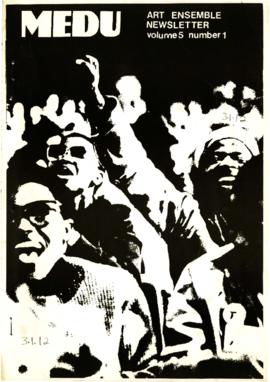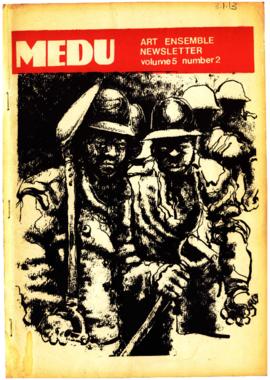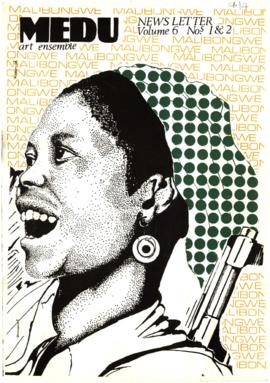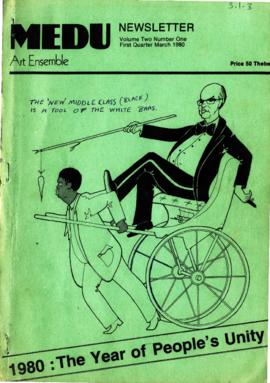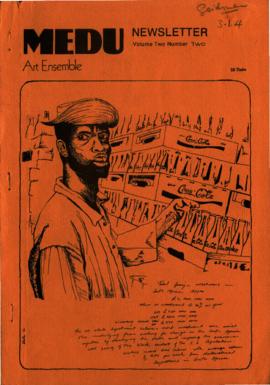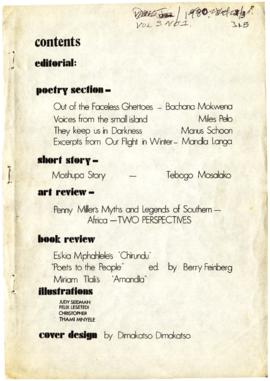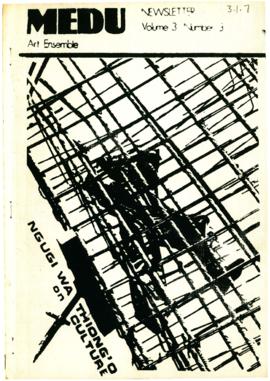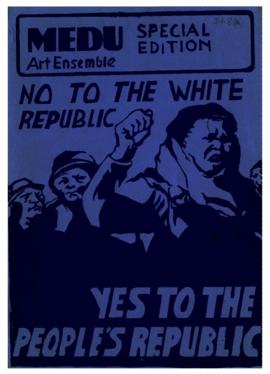Newsletter 1983, Vol. 5, No. 1
- ZA MEDU MEDU-3-3.1-3.1.12
- Subsérie
- 1983
Parte de 3-MEDU NEWSLETTERS
This is the first issue of 1983. This edition, the first since the Culture and Resistance Conference, aims to prioritise the work of local artists. The edition consists of Medu Art Ensemble interviewing John Selolwane, a guitarist for the band Kgalagadi in Botswana, who has a wide experience of playing music in various parts of Africa. John Donne's poem, "After Maseru", follows the Maseru Raid on 9 December 1982 where 42 people suspected of being activists and members of the ANC were killed. Donne gives a sense of the ignorance and apathy of many South Africans to this gruesome massacre by the Apartheid government. There is also a review of the photographic exhibition "Art Towards Social Development" by Tim Williams. He showceses photographs that capture the "cultural reality of Apartheid" and "the vulerability of South African fascism". A second photographic exhibition "Portrait of people", a graphic record of the South African liberation struggle, is reviewed in this issue. It is explained that history of the people is incomplete without pictorial records of the people who made that history. Another interesting piece is an article about culture and resistance in South Africa by Keorapetse Kgositsile. The author explains that the determination and commitment to life which is reflected in arts and cultural resistance is not as new a development in South Africa as some people might think. Front page graphic by Mike Kahn on silkscreen print.
Sem título

